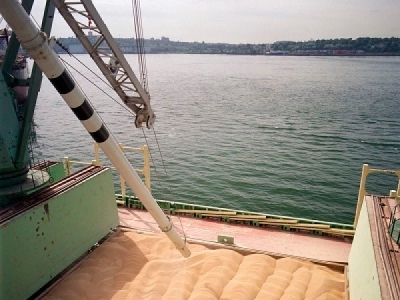
Posted on March 12, 2018
The Vancouver Fraser Port Authority today released the 2017 year-end statistics for cargo through the Port of Vancouver. Overall cargo volume through the port reached a record high of 142.1 million tonnes, up five per cent from 2016. Sectors experiencing strong growth include containers and bulk grain, both of which hit new records in 2017.
“The record year for cargo movement and healthy growth across the port reflects the strength of the Canadian economy in 2017, as well as the Port of Vancouver’s ability to accommodate the most diversified range of cargo of any port in North America,” said Robin Silvester, president and chief executive officer at the Vancouver Fraser Port Authority.
Notably, overall container traffic (measured by TEUs or twenty-foot equivalent units) saw a significant increase of 11 per cent over 2016 to reach a record of 3.3 million TEUs, with loaded imports up by 11 per cent. Volumes were driven by a global upswing in economic activity, which boosted Canadian export sales and overall strength in the transpacific container market.
“Year over year we continue to see an increase in the global demand for Canadian products shipped in containers and Canadian demand for consumer and manufacturing goods from Asia,” continued Silvester. “To meet future demand, we are taking steps to ensure the Port of Vancouver is ready to handle growing container volumes through Canada’s West Coast. A number of investments in infrastructure are already underway in the port to build container capacity.”
Strong global demand for Canadian agriculture was met with a bumper harvest in Canada and increased exports of grain through the Port of Vancouver. Bulk grain saw another record year in 2017 at 23.6 million metric tonnes an eight per cent increase over 2016, making this the Port of Vancouver’s fourth consecutive year of record grain volumes.
The auto sector saw a nine per cent increase in 2017 from 2016, boosted by a record year for auto sales across Canada and an increase in consumer confidence. This is the third consecutive year of an upward trend in autos through the Port of Vancouver.
The breakbulk sector saw a two per cent increase over 2016 due to strong woodpulp exports and increased movement of domestic consumer goods along the Fraser River and between the Lower Mainland and Vancouver Island.
The cruise industry in Vancouver is experiencing stable growth as demand for cruises to Alaska continues to increase. In 2017, the port welcomed 236 cruise ships and 842,928 passengers compared to 826,820 passengers in 2016, an increase of two per cent.
“This record year is a success shared with all the port terminal operators, many of whom have made investments in infrastructure and technology that have increased the capacity of the Port of Vancouver, and with the many shippers and marine carriers whose continued confidence in the gateway we appreciate” added Silvester.
Source: Port of Vancouver





